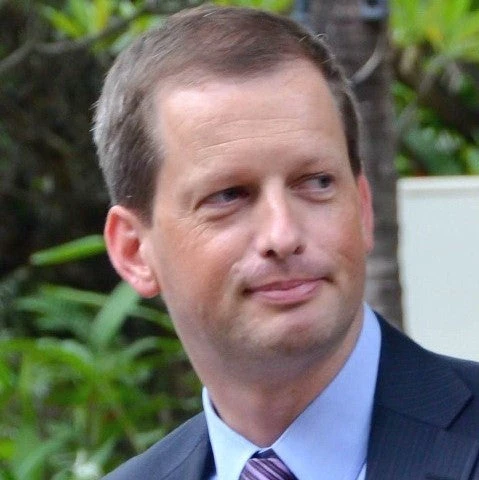
One of the trips was a joint mission by managers from the various international financial institutions (IFIs) that are supporting the project. Joint missions help ensure that all the IFIs have a shared understanding of project progress, as well as avoiding the burden of multiple missions on the government and NTPC officials who are supposed to be focused on getting the job done. Overall it went well, as measured by the fact that I have not yet been moved to another project.
During the mission a small group of us stopped off to look at progress in the implementation of the downstream program in a small village on the banks of the Xe Bang Fai. The village has already been receiving assistance to help boost their livelihoods ahead of any potential project impacts – as a form of community compensation for likely communal fisheries impacts on the Xe Ban Fai (Nanda also blogged about this a while ago).
We ended up talking to a man who was investing in fish ponds with some financial and technical support from the project. He had been managing fish ponds for some time, but was in the midst of expanding his operation and making it more productive. Since we had Ron Zweig, our fisheries expert with us, they soon descended into an animated conversation about which fish he was farming, how many fish he was getting out of each pond, how he was feeding them, what happened during the annual flood cycle, whether they ever got sick, and so on.
It was during this conversation that Ron asked about whether this man’s fish ever collected near the surface of the pond gasping for air. The man said no, but as this can happen in fish farming, Ron went on to suggest a remedy in case it did. The problem relates to changes in the water that affect the efficiency of a fish’s gills: while there is oxygen in the water, the fish can no longer process it properly, and hence gasp for air, particularly at dawn and dusk. The solution is to sprinkle a specific quantity of salt into the water, which corrects the chemical imbalance and makes the fish happy again. After sizing up the fish ponds and depth of water, we proceeded to do the calculation for the right amount of salt on a mobile phone, and left the farmer equipped to take action if need be. Interestingly, Ron learned this trick from a Chinese farmer many years ago, who had learned it from his father, who had learned it from his father…. Intrigued, Ron dug into it and discovered that there was a scientific literature about this – but has wisely avoided the temptation of distributing organic chemistry articles to the fish farmers he works with.
So, to cut a long story short, after all the trips of the last couple of months, I feel like heading for the surface and trying to take a breath – and a strong need for someone to sprinkle some salt around my office.
When I got back into my office yesterday I had an opportunity to read some of the material that has recently been produced on NT2 by project critics, and was struck the parallel universes that we inhabit. As Nanda mentioned in her last blog entry, there are surely many, many challenges facing this project. But there is also undeniable progress being made, as measured by the variety of independent monitors and advisors that review NT2 on an ongoing basis. The Panel of Experts, for example, in their 14th and latest report (pdf) refer to extraordinary progress made in addressing the issues they identified in their 13th report (pdf). The International Advisory Group, Independent Monitoring Agencies, Lenders Technical Advisors, and the IFIs have all reached similar conclusions: plenty of challenges, but substantial progress being made. In contrast, if you just read the new op-eds, publications (pdf) and slideshows just released by project critics you might believe that the project was a complete disaster. This is not simply a matter of seeing the glass as half full or half empty: critics are suggesting the glass is 95% empty.
Over the next few days we will be putting together the specific facts and arguments to correct the various inaccuracies and insinuations made, although perhaps in the greater scheme of things there is little harm done: the thousands of people involved in implementing the NT2 program will continue to focus on getting the job done; the various independent oversight bodies will continue to closely monitor progress, name problems where they see them, and suggest constructive ways to address them; and the development results the project is designed to achieve will materialize. But I also can’t help feeling that just as there is no role for complacency in Nam Theun 2, there is also no role for gratuitous inaccuracy.
Salt, anyone?


Join the Conversation